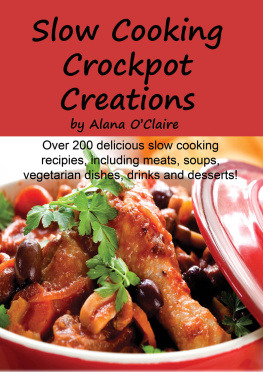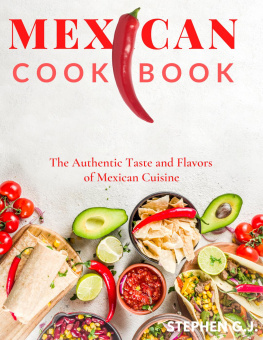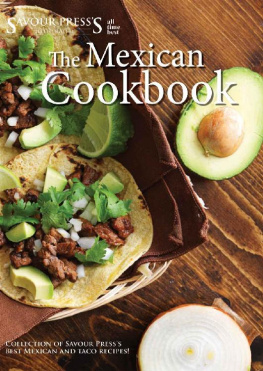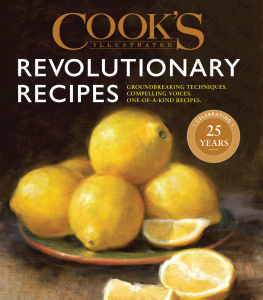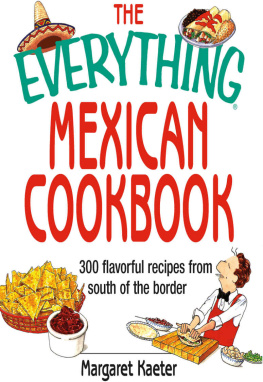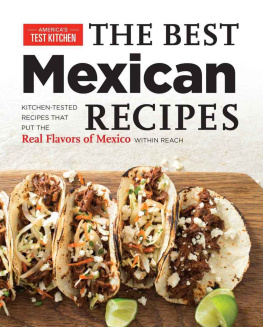Copyright 2015 by the Editors at Americas Test Kitchen
All rights reserved. No part of this book may be reproduced or transmitted in any manner whatsoever without written permission from the publisher, except in the case of brief quotations embodied in critical articles or reviews.
AMERICAS TEST KITCHEN 17 Station Street, Brookline, MA 02445
Library of Congress Cataloging-in-Publication Data
The best Mexican recipes: kitchen-tested recipes put the real flavors of Mexico within reach / by the editors at Americas Test Kitchen.
pages cm
Includes bibliographical references and index.
ISBN 978-1-936493-97-5 (alk. paper)
EPub 978-1-940352-25-1
1. Cooking, Mexican. I. Americas Test Kitchen (Firm)
TX716.M4.B4265 2015
641.5972-dc23
2014046398
Manufactured in the United States of America
10 9 8 7 6 5 4 3 2 1
Paperback: $26.95 US
Distributed by Americas Test Kitchen
17 Station Street, Brookline, MA 02445
EDITORIAL DIRECTOR: Jack Bishop
EDITORIAL DIRECTOR, BOOKS: Elizabeth Carduff
EXECUTIVE FOOD EDITOR: Julia Collin Davison
SENIOR EDITOR: Dan Zuccarello
ASSOCIATE EDITOR: Danielle DeSiato
ASSISTANT EDITOR: Melissa Herrick
EDITORIAL ASSISTANTS: Kate Ander and Samantha Ronan
TEST COOKS: Lawman Johnson, Sebastian Nava, and Russell Selander
DESIGN DIRECTOR: Amy Klee
ART DIRECTOR: Greg Galvan
ASSOCIATE ART DIRECTOR: Taylor Argenzio
DESIGNER: Jen Kanavos Hoffman
PHOTOGRAPHY DIRECTOR: Julie Cote
ASSOCIATE ART DIRECTOR, PHOTOGRAPHY: Steve Klise
STAFF PHOTOGRAPHER: Daniel J. van Ackere
ADDITIONAL PHOTOGRAPHY: Keller + Keller and Carl Tremblay
FOOD STYLING: Catrine Kelty and Marie Piraino
PHOTOSHOOT KITCHEN TEAM:
ASSOCIATE EDITOR: Chris OConnor
TEST COOK: Daniel Cellucci
ASSISTANT TEST COOK: Matthew Fairman
PRODUCTION DIRECTOR: Guy Rochford
SENIOR PRODUCTION MANAGER: Jessica Quirk
PRODUCTION MANAGEMENT SPECIALIST: Christine Walsh
PRODUCTION AND IMAGING SPECIALISTS: Heather Dube, Dennis Noble, Lauren Robbins, and Jessica Voas
PROJECT MANAGER: Britt Dresser
COPY EDITOR: Cheryl Redmond
PROOFREADER: Elizabeth Emery
INDEXER: Elizabeth Parson
PICTURED ON COVER:
Appetizers and Drinks
Soups, Stews, and Chilis
Tacos, Tostadas, Tamales, and More
Burritos, Chimichangas, and Quesadillas
Enchiladas and Casseroles
Poultry
Beef and Pork
Seafood
Vegetarian Mains
Eggs
Sides
Introduction
It is hardly surprising that Mexico, with its proximity to many American border towns, has had a huge and enduring influence on the American food scene. Millions of immigrants have brought with them their passion for regional specialties like empanadas and mole poblano, recipes that are now virtually household names in our country.
Some dishesguacamole and salsa, to name twoare now so mainstream that we forget their origins. And tacos are the new pizza, found everywhere from fast food outlets and food trucks to white tablecloth restaurants.
So with this book, we set out to tell the story of Mexican cooking in the United States through a collection of foolproof recipes that range from little-known authentic dishes and Tex-Mex favorites to fresh, modern dishes inspired by the flavors of Mexico. As with any great cuisine, Mexican cooking is incredibly diverse. The history of some dishes dates back to pre-Columbian times. The cuisine blends the complex history of the diverse peoples native to Mexico along with those who came to Mexico from Spain and other parts of Europe, as well as Africa and Asia.
Because Mexico is such a huge country with a varied climate and topography, the range of cooking is amazing. This book represents a small sampling of Mexicos regional cuisines, highlighting the spicy fish preparations of the Yucatn (many infused with the flavors of the tropics) as well as heartier beef dishes from the north and the complex moles of Puebla and Oaxaca.
Theres plenty of familiar fare, dishes like burritos and enchiladas that have long been part of the American repertoire. But weve also included dozens of authentic regional specialties you rarely see in restaurants north of the border, dishes like poc chuc (grilled citrus-marinated pork) or .
We think this book presents the very best of Mexican cooking put through the filter of what makes sense for the American home kitchen. No incredibly exotic local ingredients or complicated techniques best left to chefs. This is home cooking at its finest.
The test kitchens approach is always to teach and explain, and this book is no exception. We start at the supermarket, where the influence of Mexico has been so very noticeable. Even the most remote supermarket, far from our southern border, stocks an array of chiles, both fresh and dried. We demystify the world of anchos and poblanos and explain how to shop for other Mexican staples, everything from tomatillos to Cotija cheese.
We have paid particular attention to technique, so throughout this book we show you core Mexican cooking processes, spelling out both the hows and the whys so you can truly understand why something is best done one way versus another. More than 200 step photos, many organized into comprehensive Learn How lessons, will teach you the essentialseverything from making your own corn tortillas to assembling the best enchiladas.
So if you have long wanted to re-create your favorite Mexican dishes at home or are eager to try your hand at making some authentic specialties you have yet to encounter, this book will guide you every step of the way. Many dishes, like , are surprisingly easy, but remarkable in the flavor they deliver. Others, like tamales or the delicious filled tortilla tarts known as sopes, demand a little more timebut weve made sure your efforts will deliver great results.
Chiles 101
Chiles, both fresh and dried, are the backbone of Mexican cuisine, with their unique flavors that range from mild and fresh to acidic and spicy to rich and deeply toasty. Some chiles are used for their heat, while others are used to provide flavor to sauces, stews, and spice rubs. Fresh chiles often have vegetal or grassy flavors, with clean, punchy heat. Dried chiles tend to have deeper, fruitier flavors, with nutty or even smoky undertones. Chiles get their heat from a compound called capsaicin, which is concentrated mostly in the inner whitish pith (called ribs), with progressively smaller amounts in the seeds and flesh. If you like a lot of heat, you can use the entire chile when cooking. If you prefer a milder dish, remove the ribs and seeds. Keep in mind, though, that even among chiles of the same variety, heat levels can vary. Here are some of the most common chiles we use in this book, as well as others that are popular in Mexican cooking.
Fresh Chiles
When shopping for fresh chiles, look for those with bright colors and tight, unblemished skin. Be aware that the same chiles can go by different names in different parts of the country, and can even vary in color.


